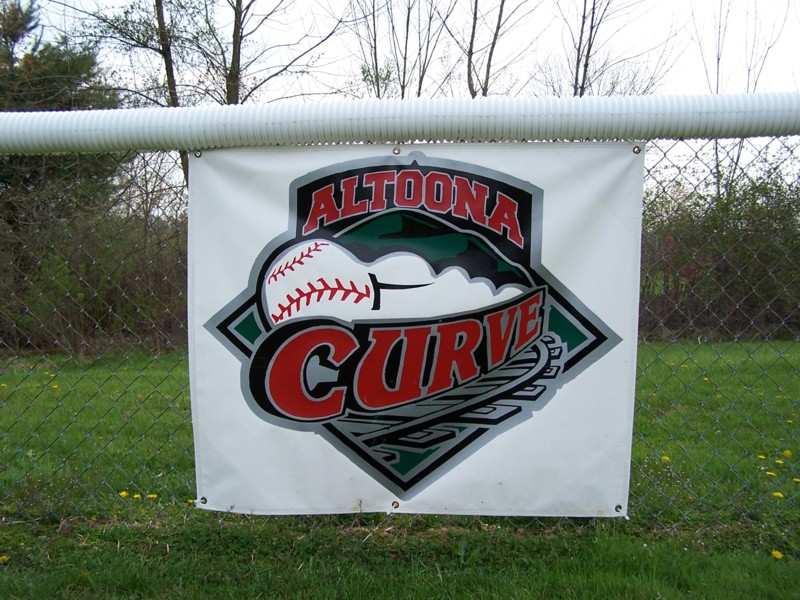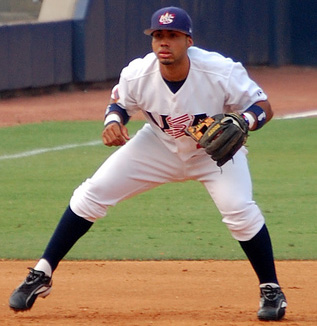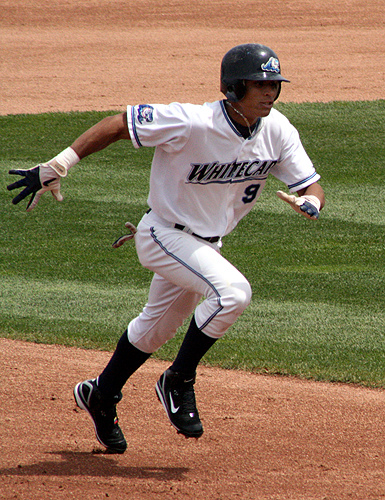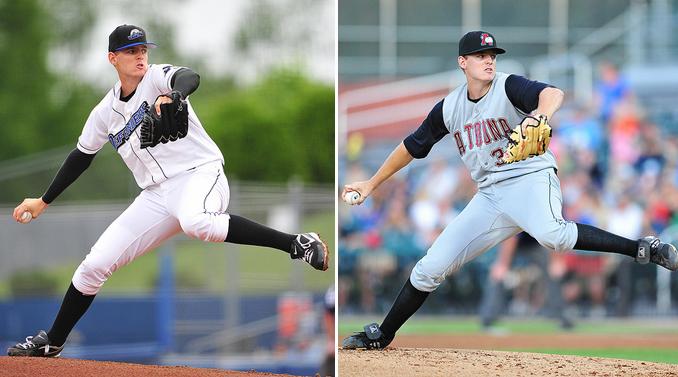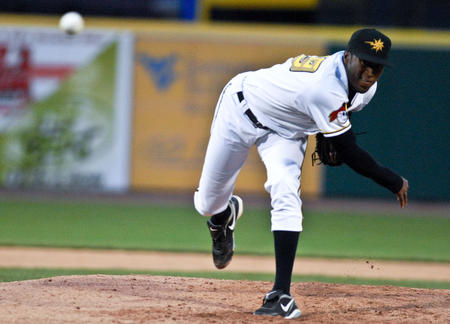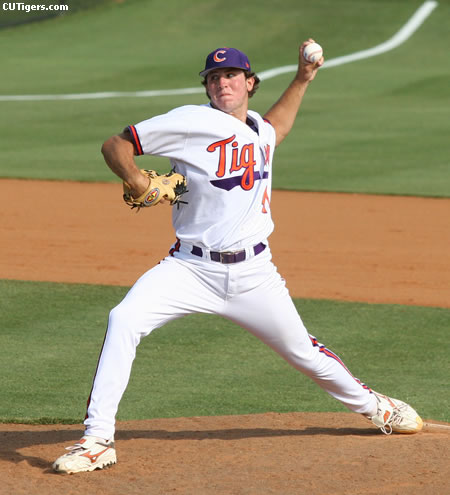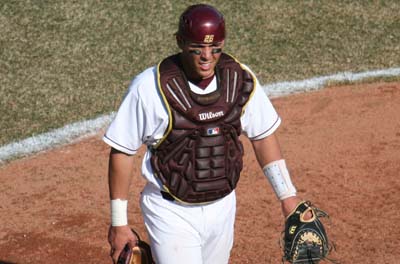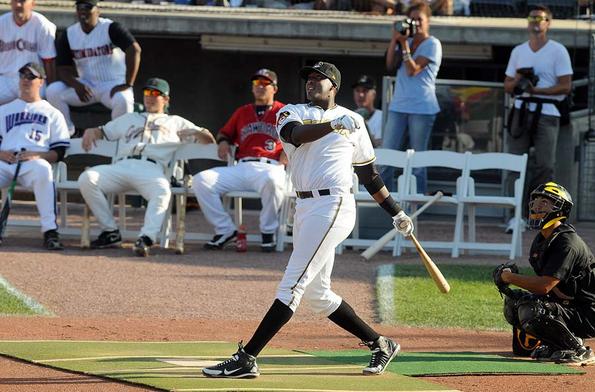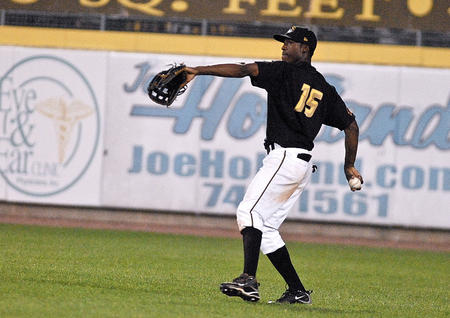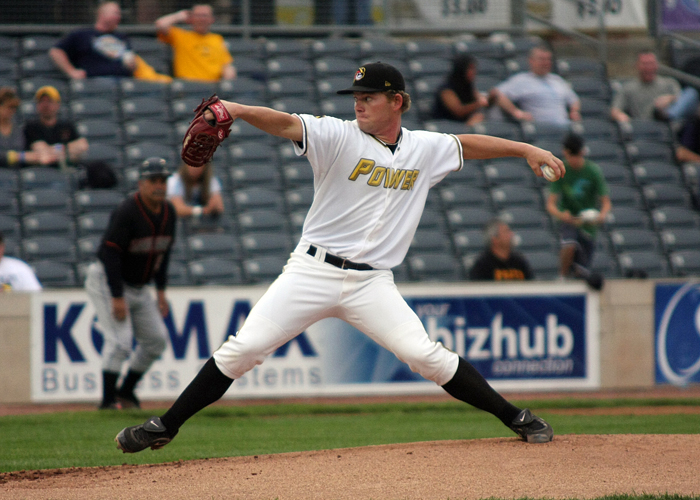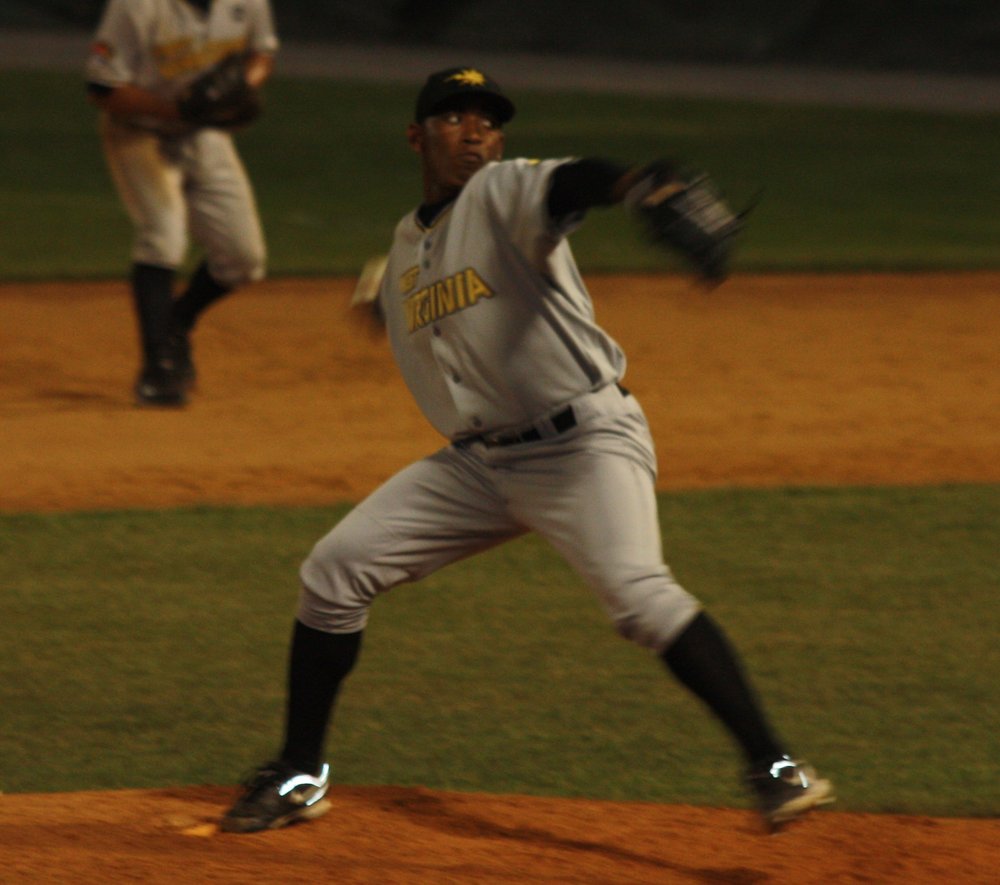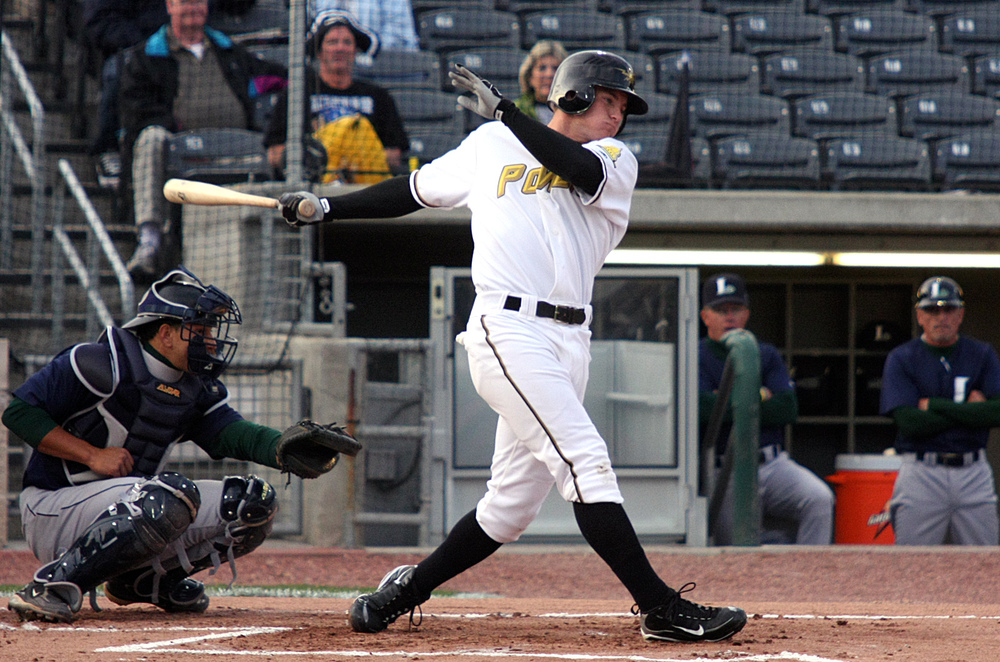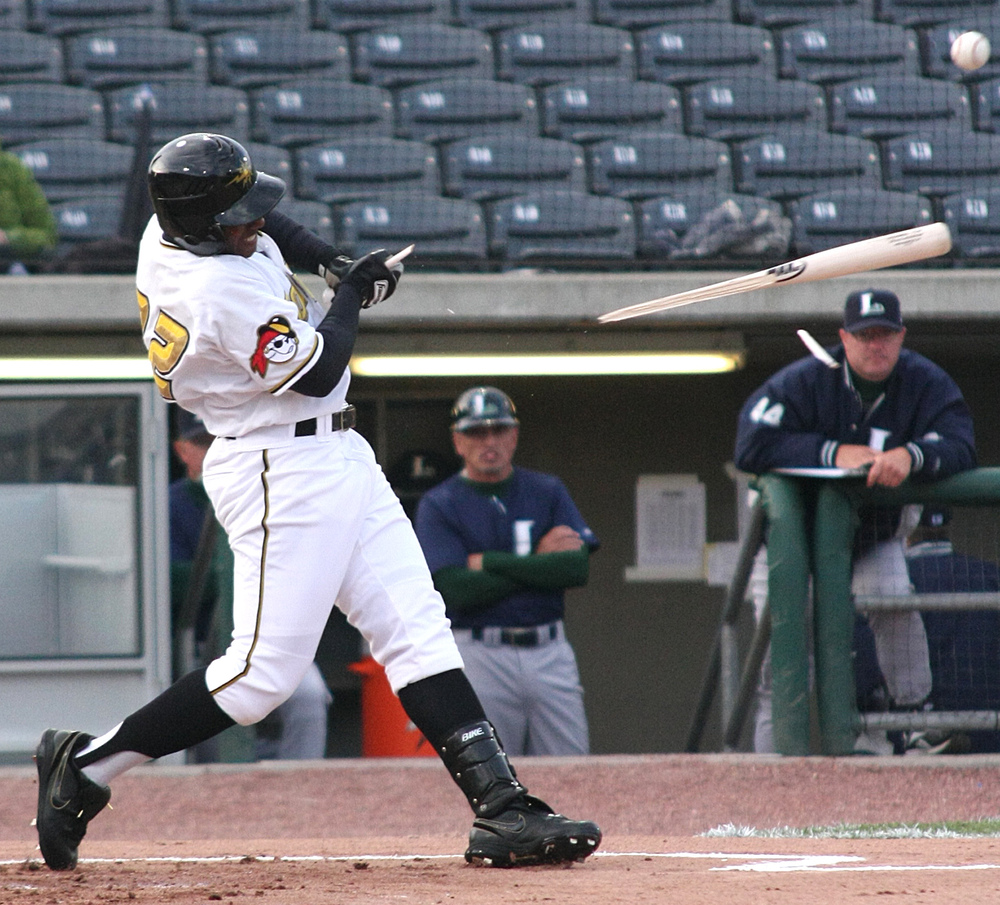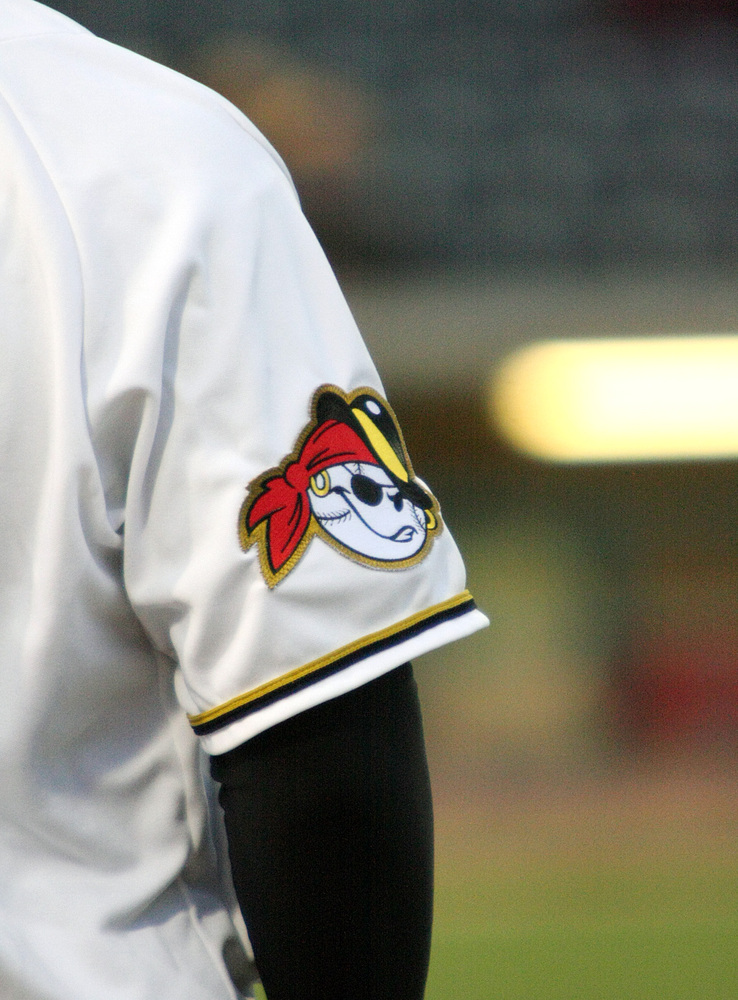Perhaps the most unique aspect of minor league baseball is the wide array of offensive environments. The hitter-friendly California League stands in stark contrast with the Florida State League, where runs are scarce and pitchers generally thrive. Both leagues operate at the high Class A level, but the average Cal League team this year scored nearly a run more per nine innings (0.95) than their FSL counterpart. That works out to 133 runs over the course of a 140-game season.
리그마다 개성이 조금씩 다른데, 타자들의 리그로 대표되는 켈리포니아 리그와 투수들의 리그로 대표되는 플로리다 스테이츠 리그가 있습니다. 이 리그의 차이점은 게임당 득점이 켈리포니아 리그가 1점 가까이 더 낸다는 것입니다. 그러니 자연스레 켈리포니아 리그의 타자는 (상대적으로) 저평가받고, 투수들은 고평가를 받겠죠.
To put that in further perspective, consider that the FSL’s most productive team, Dunedin, would have ranked dead last in the Cal League with their 610 runs. But if we bolster their attack by that 133-run exchange rate, the Blue Jays would surge to fourth in the Cal League with 743 runs. And that doesn’t even take into account that because of the FSL’s myriad rainouts, Dunedin completed six fewer games than High Desert, the Cal League’s most offensive outfit. Furthermore, that doesn’t take into account the number of seven-inning contests, brought about by doubleheaders, played by Dunedin. We do know that Mavericks pitchers completed more than 90 additional innings (92 2/3 to be exact) than Dunedin hurlers.
좀 상세하게 말한다면 FSL에서 가장 많은 득점을 올린 더니든 블루 제이스(Dunedin Blue Jays)는 올해 총 610점을 올렸지만, 켈리포니아 리그에서 이 득점은 꼴찌입니다. 물론 여기에는 비가 많이 오는 플로리다의 환경이 한몫을 할 겁니다. 그들은 다수의 경기를 매년 치르지 못한체 시즌을 마무리 짓기 때문입니다.
League context is crucial to the process of ranking prospects. So as you digest our various league Top 20 Prospects lists, you can consult the chart below to see how players compare with the league averages.
아래의 도표는 레벨당 타격스텟을 나타낸 것입니다.
| LEAGUE AVERAGES | |||||||||||
| LEAGUE | LVL | AVG | OBP | SLG | R/9 | BB | SO | ISO | BIP | HR | RUNS |
| International | AAA | .262 | .328 | .395 | 4.43 | 7.9 | 17.8 | .133 | .308 | 107 | 615 |
| Pacific Coast | AAA | .272 | .341 | .418 | 4.99 | 8.4 | 17.3 | .146 | .316 | 124 | 701 |
| Eastern | AA | .258 | .332 | .385 | 4.48 | 8.7 | 18.2 | .127 | .307 | 94 | 607 |
| Southern | AA | .255 | .332 | .380 | 4.45 | 9.0 | 18.0 | .124 | .304 | 89 | 599 |
| Texas | AA | .266 | .340 | .391 | 4.88 | 8.9 | 16.4 | .125 | .310 | 98 | 670 |
| California | Hi A | .270 | .341 | .417 | 5.19 | 8.2 | 20.4 | .147 | .331 | 113 | 716 |
| Carolina | Hi A | .256 | .329 | .383 | 4.65 | 8.4 | 19.1 | .127 | .309 | 92 | 616 |
| Florida State | Hi A | .252 | .322 | .363 | 4.24 | 8.0 | 19.0 | .111 | .306 | 70 | 546 |
| Midwest | Lo A | .256 | .329 | .373 | 4.67 | 8.5 | 20.1 | .118 | .316 | 76 | 631 |
| South Atlantic | Lo A | .254 | .324 | .368 | 4.51 | 7.7 | 20.7 | .114 | .317 | 73 | 601 |
• R/9 scales runs scored to nine innings, making no distinction between earned and unearned runs.
• The BB and SO columns figure walks and strikeouts per plate appearance. Walks do not include intentional passes.
• Isolated power (ISO) is the difference between slugging and average, separating extra bases and weighing them per at-bat.
• Balls in play average (BIP) figures the rate at which struck baseballs—excluding home runs—evade defenses and are scored as hits.
• The HR and RUNS categories are league averages for team home runs and team runs scored, providing a snapshot of the various offensive contexts.
Looking at full-season leagues averages, we see a lot of trends that make intuitive sense. Strikeout rate plummets and power output increases as players move up the minor league ladder. Defensive efficiency, as measured by BIP, also improves slightly at higher levels. That is, balls put in play at the Triple-A level fall in for hits less frequently than they do in low Class A. (Because of their high-octane nature, the California and Pacific Coast leagues serve here as outliers that disrupt these trends.)
제가 IL에 관해서는 잘 모르니 생략하고 게임당 득점(R/9)를 보시면 확실히 PCL과 Cal, TEX가 많은 득점을 올린다는 것을 알 수 있을 겁니다. 반대로 대부분의 스텟에서 낮은 수치를 나타내는 리그를 찾아보시면 FSL와 MWL가 보이실 겁니다.
But the one league comparison that seems to defy explanation occurs at the low Class A level, where the Midwest League proved to be a better run-scoring environment than the South Atlantic virtually across the board. In most years, the opposite is true—and dramatically so. (Take 2007, for example.) The average age of batters and pitchers in these two circuits is practically identical, so it’s not a matter of experience. Whatever it is—changing weather patterns, uneven distribution of talent, new ballparks—it merits further analysis.
| LEAGUE AVERAGES, SHORT-SEASON CIRCUITS | |||||||||||
| LEAGUE | LVL | AVG | OBP | SLG | R/9 | BB | SO | ISO | BIP | HR | RUNS |
| New York-Penn | SS | .245 | .320 | .351 | 4.34 | 8.4 | 20.4 | .106 | .307 | 31 | 314 |
| Northwest | SS | .264 | .342 | .380 | 5.11 | 8.8 | 20.0 | .116 | .327 | 45 | 382 |
| Appalachian | R | .257 | .328 | .384 | 4.98 | 8.0 | 21.0 | .127 | .320 | 43 | 320 |
| Pioneer | R | .273 | .345 | .408 | 5.50 | 8.6 | 20.3 | .135 | .338 | 52 | 405 |
| Arizona | R | .263 | .339 | .379 | 5.52 | 8.5 | 22.7 | .115 | .343 | 25 | 306 |
| Gulf Coast | R | .238 | .316 | .335 | 4.32 | 8.5 | 20.5 | .097 | .301 | 19 | 232 |
A player’s age relative to his level of competition goes hand-in-hand with league context in making these prospect evaluations. Courtesy of Baseball Reference’s wonderful minor league site, we present the average age (weighted by playing time) at the various levels of the minors.
위의 도표는 숏-시즌만 모아놓은 것입니다. 아무래도 비교할때 풀시즌을 소화하는 레벨(혹은 리그)과는 분리해놔야겠죠.
| AVERAGE AGE BY CLASSIFICATION | |||||||
| CLASSIFICATION | LEAGUES | TEAMS | BATTERS | PITCHERS | OVERALL | ||
| Triple-A | IL, PCL | 30 | 26.9 | 27.0 | 26.9 | ||
| Double-A | EL, SL, TL | 30 | 24.3 | 24.2 | 24.3 | ||
| High Class A | CAL, CAR, FSL | 30 | 22.6 | 23.0 | 22.8 | ||
| Low Class A | MWL, SAL | 30 | 21.6 | 21.7 | 21.6 | ||
| Short-Season | NYP, NWL | 22 | 21.2 | 20.5 | 20.8 | ||
| Rookie Advanced | APPY, PIO | 18 | 20.7 | 20.9 | 20.8 | ||
| Rookie | AZL, GCL | 27 | 19.9 | 21.2 | 20.5 | ||
That’s not a misprint. By virtue of the Arizona League having 11 teams, the Rookie complex level has an uneven number of teams.
각 레벨별 선수들의 평균나이를 올려놨는데, 자신이 주목하고 있는 레벨의 유망주가 대충 여기 평균에 준하거나 낮다면 BA도 주목하고 있을 겁니다. BA는 툴과 나이를 중요시여기는 곳이기때문이겠죠.
근대 한가지 생각해봐야할 것은 트리플A 같은 경우는 이젠 빅리그에 올라갈 수 없는 선수(혹은 계속 도전하는 선수)가 있기때문에 평균나이가 많습니다. 저 나이에 트리플A에 유망주라고 한다면 조금은 실망해야할것입니다.






























